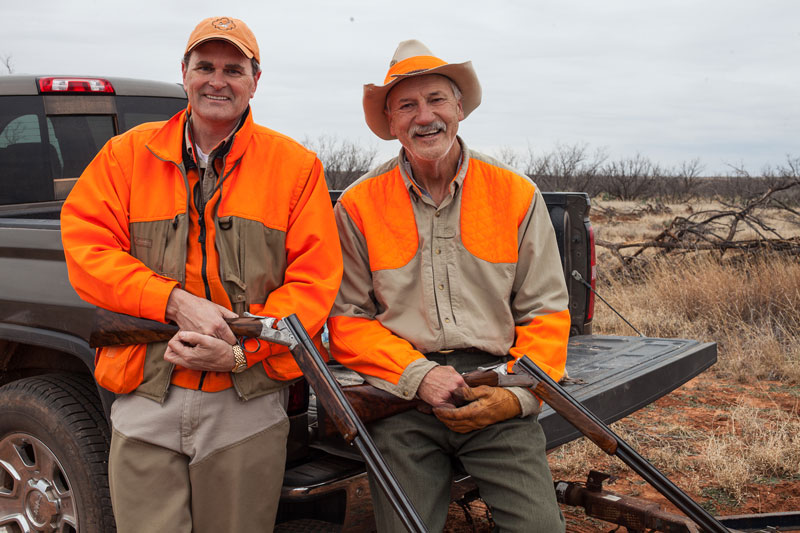The label states that it is effective for Cecal parasites but doesn’t mention eyeworms. Is QuailGuard effective on eyeworms?
Yes. “We have solid field evidence that it is highly effective in killing eyeworms in infected quail. We also have excellent laboratory evidence that the drug in QuailGuard, fenbendazole, is highly toxic to the eyeworm. When we conducted field efficacy trials for FDA registration, we had adequate infection with cecal worms, but at that point in time, we had inadequate infection in eyeworms; therefore, we did not have enough sample size for the statistical analysis required for FDA submission. We were encouraged to proceed with just the cecal worm data because of how effective QuailGuard is in removing cecal worms from infected birds. As mentioned, QuailGuard is also very effective in removing eyeworms from infected quail.” - Dr Ron Kendall
Is it okay if I use a feeder other than the recommended feeder – Quail Safe?
While you can use other feeders, Quail Safe feeders have been proved to be very effective in field tests. It is important that feeders are heavy enough to withstand attempts by pigs, coyotes, and field mice to access the feed. Quail Safe’s feeders made of heavy-gauge steel with powder coating offer long-lasting, year-round performance. When selecting a feeding station, ensure it protects the feed from rain and direct sunlight and is enclosed to protect quail while they are feeding and prevent access by non-target animals.
Isn’t it true that feeders will cause predators to concentrate where they are and kill more quail?
This can be true with some open feeder systems. However, our extensive fieldwork shows no significant increase in predation on quail using enclosed feeder systems. These feeders provide a protected environment where quail can feed safely. Video evidence shows that quail feeding in enclosed feeders are not exposed to aerial predation and that they exit the feeders quickly, reducing the risk of predation.
Can I put more than one bag of QuailGuard in at a time?
Generally, one 50-pound bag per 21 day period is sufficient. However, if you notice heavy feeding activity, a second bag might be necessary. Monitor feed usage and adjust based on consumption rate specific to locations on your ranch.
Does it do any good to feed non-medicated feed in periods when I am not feeding with QuailGuard.
Yes, depending on environmental conditions. During times of significant plant and seed growth or insect abundance, natural food supplies may be sufficient for wild quail. However, during drought conditions, providing non-medicated or supplemental feed can help maintain the nutrition and health of wild quail, enhancing their overall well-being and reproductive success. Feeding quail year-round also has the added benefit of conditioning quail to form a habit of seeking food in the feeders. It is worth noting that, although they use a broadcast method and not feeders, Tall Timbers Research Station in Florida has documented the benefits of year-round feeding and Texas Tech has documented success using similar techniques in Texas. https://www.texastechquail.org/journals
The 2018 study concluded; “…feed treatments had positive effects on survival during winter compared to control units in both years, across all pastures. “ “Broadcast feeding improved winter survival rates and subsequently, the number of females available entering the breeding season.”
Is there any proof that parasites kill their host directly?
In the wild under ideal conditions, quail have a survival rate of 20% in their first year of life. Any small handicap could lead to an early death and therefore make them one of the 80% who will not reach their first birthday. In addition to inhibiting the bird’s ability to find food and see predators, eyeworms cause inflammation and possible infection. Cecal worms rob the bird of necessary nutrition, and they can become malnourished. The active ingredient in QuailGuard, kills both parasites.
How does QuailGuard impact the overall health and reproduction of quail?
By effectively controlling parasitic infections, QuailGuard helps improve the overall health of quail, leading to better body condition, increased energy levels, and improved reproductive success. Healthy quail are more likely to thrive and reproduce successfully, contributing to a stable and growing population.
How does QuailGuard interact with the natural diet of wild quail?
QuailGuard is designed to be compatible with the natural diet of wild quail. It provides
necessary medication while allowing quail to continue foraging for natural foods. During periods of natural food abundance, quail may consume less medicated feed, but the presence of QuailGuard ensures they receive treatment when needed.
What is the shelf life of QuailGuard feed?
QuailGuard feed typically has a shelf life of 12 months when stored in optimal conditions (cool, dry place, away from direct sunlight and moisture). Always check the expiration date on the packaging before use and rotate stock to ensure you are using the freshest feed available.
Is it safe to eat a quail that has consumed QuailGuard?
The active ingredient in QuailGuard has been commonly used in commercial poultry operations for decades. The FDA verified that the active ingredient in QuailGuard dissipates within tissue of the quail less than 24 hours from the quail consuming QuailGuard. The FDA determined that there is no withdrawal period is required when used according to labeling. In addition, the best dates and recommended dates to feed QuailGuard mean that the feeding will be completed before the start of Texas quail season.
Is there a risk of parasites developing resistance to QuailGuard?
While the risk of parasites developing resistance to fenbendazole (the active ingredient in QuailGuard) exists, it is generally low when used as directed. To minimize the risk, it is important to follow the recommended treatment protocols. Integrating non-chemical management practices, such as prescribed fire, can also help prevent resistance.

